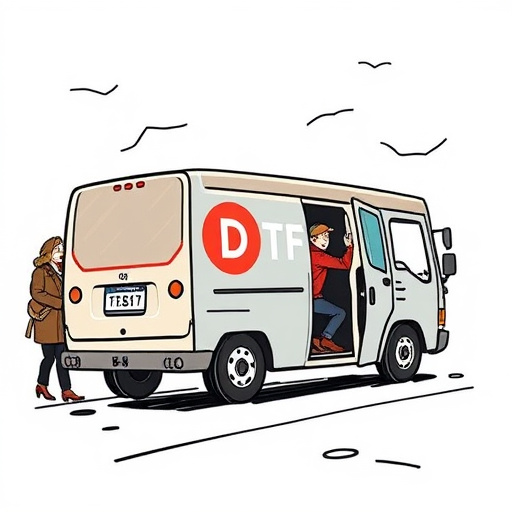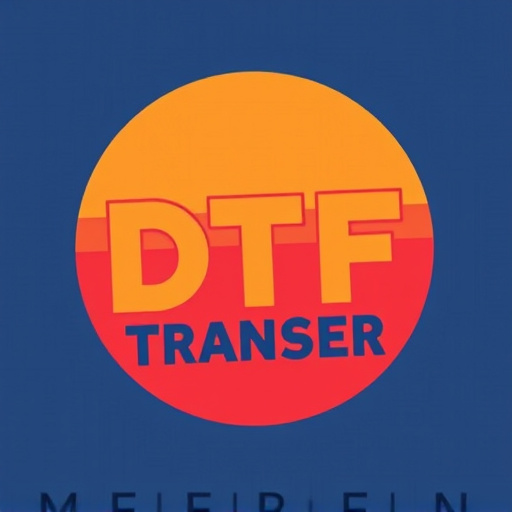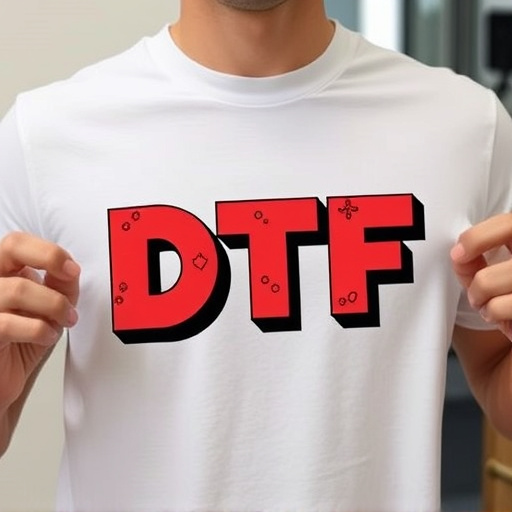DTF (Direct to Film) transfer is a cutting-edge technology that replicates digital content onto physical film stock, offering high-quality results and creative control. The process involves precise cooling to set the adhesive and preserve the original work's integrity. Digital Thermal Transfers (DTF) are versatile, cost-effective solutions suitable for temporary applications on various materials, ideal for small businesses and events. DTF Transfers find extensive use across industries, enhancing product branding, textiles, arts, and promotional merchandise. Safety precautions include protective gear, proper ventilation, and full cooling before handling. Future advancements in materials science and AI integration promise higher resolutions, enhanced color accuracy, and streamlined production.
Discover the versatile world of DTF (Direct to Film) transfers, a game-changing technology for temporary applications. This innovative process allows for precise printing directly onto film, ideal for projects requiring removal after cooling. From its comprehensive understanding and unique cooling mechanism to diverse use cases across industries, this article explores the benefits and best practices of DTF transfers. Uncover how this technology is shaping the future of temporary installations, offering endless creative possibilities.
- Understanding DTF Transfer: A Comprehensive Overview
- The Process of DTF Cooling and Its Significance
- Benefits of Using Film Transfers for Temporary Applications
- Common Use Cases for DTF Transfers in Various Industries
- Best Practices for Safe Handling and Removal of DTF Transfers
- Future Trends and Innovations in DTF Technology
Understanding DTF Transfer: A Comprehensive Overview

A DTF (Direct to Film) transfer is a cutting-edge process that allows for the precise replication of digital content onto physical film stock, offering a unique and innovative alternative to traditional printing methods. This technology has gained significant traction in various industries, from cinema to fine art photography, due to its ability to produce high-quality, visually stunning results. The DTF process involves a complex series of steps where digital data is translated into a chemical reaction on the film surface, creating an exact replica of the original source material.
The appeal of DTF lies in its versatility and the preservation of detail. By bypassing the intermediate stages of traditional printing, DTF ensures that every pixel of the digital image is accurately represented on the final film medium. This method is particularly advantageous for artists and filmmakers who seek to maintain the integrity of their vision, as it allows for real-time adjustments during the transfer process, enabling creative control and customization at every step.
The Process of DTF Cooling and Its Significance

The process of DTF (Direct to Film) cooling is a critical stage in the film transfer method, ensuring the stability and integrity of the transferred image. After the delicate process of applying the emulsion side of the film to the substrate, the material needs to cool down gradually before it can be removed safely. This cooling period allows the adhesive to set, creating a strong bond between the film and the base material. The DTF transfer method is significant because it offers a direct and precise way to replicate film textures, colors, and details onto various surfaces, making it a favorite among artists and restorers who seek to preserve cinematic heritage.
The significance of DTF cooling lies not only in its role as an adhesive setter but also in its contribution to the longevity of the transferred film. A controlled cooling process prevents warping, bubbling, or cracking of the film layer, ensuring the final product remains vibrant and intact for years to come. This method is particularly useful when working with delicate materials, where a precise and gentle approach is required to maintain the integrity of the original work.
Benefits of Using Film Transfers for Temporary Applications

Film transfers, particularly Digital Thermal Transfers (DTF), offer numerous advantages for temporary applications. One of their key benefits is versatility; they can be used on a wide range of materials, from fabric to wood, metal, and even plastic, allowing for creative and unique projects. DTF transfers are also cost-effective solutions for one-off or short-term uses since they don’t require complex printing set-ups or expensive machinery. This makes them ideal for small businesses, hobbyists, and event organizers looking to create eye-catching designs without breaking the bank.
Additionally, DTF transfers provide excellent durability for their temporary nature. The bonding process ensures that the design is robust enough to withstand everyday use, making them suitable for everything from promotional materials and pop-up displays to stage backdrops and themed events. Moreover, since these transfers are designed to be removed after cooling completely, they leave no residual adhesive, ensuring surfaces remain pristine and ready for future applications, making them a sustainable choice for various temporary decorative or informational needs.
Common Use Cases for DTF Transfers in Various Industries

DTF Transfers, or Direct-to-Film transfers, are widely used across various industries due to their versatility and efficiency. In the packaging industry, DTF Transfers are employed to create high-quality, durable prints on a variety of materials, from cardboard to plastic, enhancing product branding and information dissemination. The technology is particularly valuable for short-run, custom printing needs, allowing businesses to quickly adapt their packaging designs without significant setup costs.
In the textile industry, DTF Transfers are utilized to print intricate patterns and designs directly onto fabrics, enabling the creation of unique, personalized clothing and accessories. This method also finds application in the arts and crafts sector, where individuals can effortlessly transfer detailed images and artwork onto various surfaces for creative projects. Moreover, DTF Transfers play a crucial role in promotional merchandise, allowing businesses to mass-produce customized items like t-shirts, mugs, and posters with brand logos or event-specific designs.
Best Practices for Safe Handling and Removal of DTF Transfers

When handling and removing DTF (Direct to Film) transfers, safety is paramount. Always wear protective gear, including gloves and eye protection, as DTF materials can contain chemicals that may cause irritation or allergic reactions. Ensure proper ventilation in the workspace to mitigate any potential risks associated with fumes.
For safe removal, allow the transfer to cool completely before handling. Use a clean, dry tool to gently lift the edge of the DTF from its substrate. Be cautious not to tear or damage the sensitive film surface. Once freed, carefully peel away the transfer from the backing paper, ensuring no residue remains on the original surface. Proper disposal of the used backing paper and any remaining chemicals is crucial to maintain a safe environment.
Future Trends and Innovations in DTF Technology

The future of direct-to-film (DTF) technology promises exciting innovations that will further revolutionize the printing industry. One prominent trend is the development of more advanced materials, enabling higher resolution and enhanced color accuracy in DTF transfers. Researchers are exploring new ink formulations and substrate materials to create vibrant, long-lasting prints with improved durability.
Additionally, integration of digital technologies like artificial intelligence (AI) and machine learning could automate various stages of the DTF process. AI algorithms can optimize image processing, predict print outcomes, and even suggest custom settings for different projects. This level of automation streamlines production, reduces human error, and opens up new possibilities for customized, on-demand printing services, making DTF technology more accessible and efficient.














